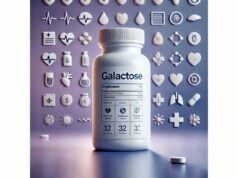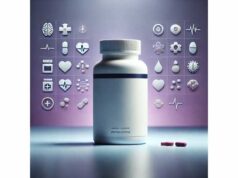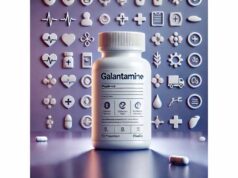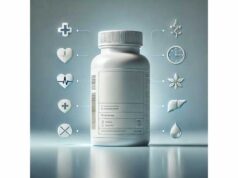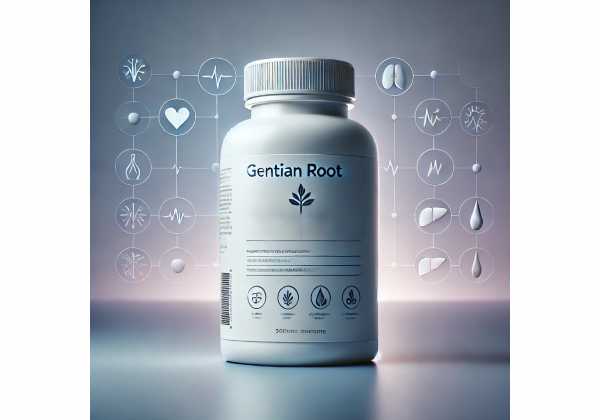
Gentian root (from Gentiana lutea and related species) is one of the bitterest botanicals known. A few drops or sips trigger a noticeable “bitter reflex,” a nerve-mediated response that primes digestion—salivation increases, stomach acid and enzymes rise, and the gut gets ready to move. Herbalists have used gentian for loss of appetite and indigestion for generations, and modern formulas still rely on it as the backbone of many “digestive bitters.” Beyond the GI tract, gentian’s secoiridoid glycosides—especially gentiopicroside (also called gentiopicrin) and amarogentin—are studied for antioxidant and anti-inflammatory actions in preclinical models. This guide explains how gentian may help, how to use it properly, who should avoid it, and what the evidence actually shows. If you’ve ever wondered whether a true bitter can make a practical difference for bloating, sluggish digestion, or meal-time appetite, you’ll find clear, concrete answers below.
Quick Overview
- May support appetite and indigestion by stimulating saliva, stomach acid, and gastric motility.
- Most common forms: tincture 2–4 mL or tea with 0.5–1 g dried root, taken 10–30 minutes before meals.
- Avoid if you have active ulcers, severe reflux, or gallstones unless advised by a clinician.
- Typical course: before main meals for several days to a few weeks; reassess if no benefit in 7–14 days.
- Not the same as gentian violet dye; choose standardized, food-grade preparations only.
Table of Contents
- What is gentian root?
- Does gentian really aid digestion?
- How to take gentian correctly
- Common mistakes and troubleshooting
- Who should not use it and safety
- What does the evidence say?
What is gentian root?
Gentian root comes primarily from Gentiana lutea (yellow gentian), a high-altitude plant native to European mountain regions. The thick, aromatic rhizomes are collected, dried, and milled for use in teas, tinctures, and extracts. Gentian belongs to the Gentianaceae family and should not be confused with gentian violet (crystal violet), a synthetic dye unrelated to the plant.
What makes gentian unique is its extreme bitterness. The secoiridoid glycosides gentiopicroside and amarogentin are responsible for that sharp, lingering taste; amarogentin is among the most bitter natural compounds ever measured. In small amounts, those molecules bind to bitter taste receptors not only on the tongue but also throughout the gastrointestinal (GI) tract. That chemosensory “bitter reflex” is why a sip of a true bitter can quickly make your mouth water and your stomach “wake up.”
Traditional and modern uses
Gentian has a long record in European folk and professional herbal medicine to help with poor appetite, functional dyspepsia (non-ulcer indigestion), a heavy or full feeling after meals, and occasional bloating. You’ll also find it in classic aperitifs and bitters formulas designed to be taken shortly before eating. In pharmacy traditions, gentian root is often listed in official pharmacopeias because of its consistent bitter activity and relatively simple quality markers (e.g., minimum content of specific secoiridoids).
How it’s prepared
- Tea or maceration (cold or warm): 0.5–1 g of coarsely cut root steeped in 150–200 mL water, typically for 5–10 minutes (warm infusion) or 15–30 minutes (cold maceration for a smoother taste).
- Tincture/extract: Liquid extracts commonly range from 1:5 to 1:1 (herb\:menstruum). A typical serving is 2–4 mL shortly before meals.
- Standardized extracts: Some products declare gentiopicroside content; standardization ensures batch-to-batch consistency but isn’t strictly necessary for simple digestive support.
What to expect
You should taste the bitterness. That is the point: if you mask it completely with sweeteners, you’ll blunt the reflex that makes gentian useful. Most people notice more saliva within seconds and a subtle sense of “readiness to eat” within 10–20 minutes. For indigestion relief, benefits are typically felt within a meal or two when gentian is used in the right timing (see usage details below).
Quality and labeling tips
Choose products that list the species (Gentiana lutea), the part (root/rhizome), and the preparation (e.g., 1:5 tincture). If possible, look for pharmacopeial grade or products following Good Manufacturing Practices (GMP). Avoid formulas that rely mostly on aromatic bitters (like citrus peels) and include only a token amount of gentian; the backbone should be a true bitter root.
Does gentian really aid digestion?
The “bitter reflex” mechanism
Gentian’s main action is reflexive. Bitter receptors on the tongue and in the GI lining (T2Rs) detect amarogentin and gentiopicroside, sending signals via cranial and enteric nerves. That chemosensory input increases:
- Salivary flow and amylase, which starts carbohydrate breakdown.
- Gastric acid and pepsin output, improving protein digestion.
- Gastric and duodenal motility patterns, helping the stomach empty more efficiently.
- Release of gut hormones (e.g., ghrelin, cholecystokinin) in response to bitter ligands in experimental models, which may modulate appetite signaling.
For people with low digestive tone—the classic “I’m just not hungry,” easy fullness, or a heavy, slow feeling—this reflex support can be enough to restore comfort around meals. The effect is physiologic rather than pharmacologic; you’re nudging the body to do what it’s designed to do when it detects a bitter plant.
What it can help with
- Loss of appetite (e.g., after illness or during convalescence) when no red-flag symptoms are present.
- Functional dyspepsia (non-ulcer indigestion): post-prandial fullness, early satiety, and upper-abdominal discomfort. Many combination bitters used in clinical trials include gentian as a key ingredient; these studies report improvements in global dyspepsia scores and motility measures.
- Occasional bloating related to sluggish gastric emptying or low stomach acid at mealtime.
What it won’t do
Gentian is not a cure for ulcers, severe reflux, gallbladder disease, or inflammatory bowel disease. In fact, stimulating gastric acid can worsen reflux and ulcers. If you have sharp or persistent pain, GI bleeding, unexplained weight loss, trouble swallowing, or nighttime pain that wakes you, seek medical evaluation—do not self-treat with bitters.
How quickly it works
When timed correctly (10–30 minutes before food), many people feel an effect with the very next meal: more saliva, crisper appetite cues, and less heaviness afterward. For chronic, mild functional dyspepsia, a trial of 1–2 weeks of pre-meal gentian is a reasonable window to assess benefit; continue only if clear improvement is present.
Why taste matters
Swallowing capsules of gentian powder can blunt the reflex because little bitter taste is perceived before the stomach. Liquids that contact the tongue—tincture, tea, or bitters solutions—generally work better for appetite and early digestive phases. If taste is a hurdle, try a tiny dose (even 0.5–1 mL tincture) and chase with a sip of water; with gentian, the signal is more important than the volume.
How to take gentian correctly
Forms and dosing
- Tincture or liquid extract: 2–4 mL (roughly 40–80 drops), taken 10–30 minutes before meals, 1–3 times daily. Sensitive users can start with 0.5–1 mL.
- Tea/infusion: 0.5–1 g dried, cut root per 150–200 mL hot water. Steep 5–10 minutes (warm infusion) or 15–30 minutes (cold maceration for less biting taste). Drink 10–20 minutes before meals.
- Bitters formula: Follow the label; most provide a gentian-forward blend at 1–2 mL before meals. Check that gentian is not just a trace ingredient.
Timing is the lever
Pre-meal timing is critical. Taking gentian with or after a heavy meal is less effective. For appetite stimulation, take the dose before breakfast and lunch. For post-meal heaviness, pre-meal dosing helps more than post-meal use.
Course length
For situational needs (e.g., after a flu when appetite is off), use for several days. For functional dyspepsia, try 7–14 days. If it helps, some people maintain pre-meal bitters for several weeks, then taper to once daily or “as needed.” If nothing changes after two weeks, reconsider the approach or seek evaluation.
Who generally benefits most
- People who describe low or “quiet” appetite cues.
- Those with a heavy, full feeling after small meals (without alarm features).
- Individuals whose symptoms improve when they smell, taste, or think about food (a clue that vagal tone and anticipatory secretions are part of the issue).
Who should avoid or use only with guidance
- Anyone with active ulcers, erosive gastritis, or significant reflux (gentian increases acid).
- People with gallstones or bile duct obstruction (bitters sometimes increase biliary flow; get clearance first).
- Pregnancy and breastfeeding: safety data are limited—avoid unless your clinician recommends and supervises.
- Children: use only on professional advice and at much smaller doses.
Practical tips
- Taste it. Let the liquid sit on your tongue for a few seconds before swallowing.
- Go smaller if needed. Even 0.5–1 mL may suffice; you don’t need to tolerate intense bitterness to see benefit.
- Keep it simple first. Try gentian alone before layering multiple herbs. This helps you judge its true effect.
- Hydration matters. A small glass of water is fine; large volumes right before eating can dilute gastric juices.
Common mistakes and troubleshooting
1) Taking it at the wrong time
Gentian works best before eating. If you take it after the meal or at bedtime, you miss the anticipatory phase that it’s designed to enhance. Fix: set a reminder 10–20 minutes pre-meal.
2) Masking the bitterness completely
Adding a lot of honey or mixing gentian into sweet drinks undermines the purpose. The bitter taste on the tongue helps trigger the reflex. Fix: dilute with plain or sparkling water—not sugar.
3) Expecting it to fix reflux or ulcers
Bitters can aggravate these. If your main issue is heartburn, gentian is unlikely to help and may worsen symptoms. Fix: seek evaluation, consider non-acid-stimulating strategies, and reserve gentian for appropriate cases.
4) Using capsules and wondering why nothing happens
Capsules limit tongue exposure and may deliver a “silent” dose. Fix: switch to tincture or tea; even micro-doses you can taste may work better than larger encapsulated doses.
5) Over-dosing
More is not more with gentian. Excess can cause nausea, cramping, or headache. Fix: drop to the lowest effective dose and shorten the steep time for tea.
6) Ignoring red flags
Persistent pain, black or tarry stools, unexplained weight loss, vomiting, difficulty swallowing, anemia, fever, or age >55 with new dyspepsia warrant medical evaluation—skip self-treatment and see a clinician.
7) Not adjusting for medications
Acid-suppressing drugs (PPIs, H2 blockers) work in the opposite direction by lowering gastric acid. Gentian may feel ineffective if you’re on these medicines, and in some cases it could strain a sensitive stomach. Fix: discuss with your prescriber before experimenting.
When gentian isn’t the right fit
If your symptoms are driven by fat intolerance (sharp right-upper-quadrant pain), rapid gastric emptying, or significant stress-related dyspepsia, then gentian’s acid-stimulating action may not target the core issue. Consider professional guidance and a broader plan (dietary pattern, meal spacing, trigger mapping, and, if appropriate, other botanicals like chamomile or carminatives that relax rather than stimulate).
Who should not use it and safety
Avoid or seek medical advice first if you have:
- Peptic ulcer disease (gastric or duodenal) or erosive gastritis.
- Severe or frequent reflux/GERD.
- Gallstones or known biliary obstruction.
- Bleeding disorders or you take medications that irritate the stomach (e.g., chronic high-dose NSAIDs); gentian may not be appropriate if your mucosa is already fragile.
- Pregnancy or breastfeeding (insufficient human safety data).
- Children (use only with professional guidance).
Possible side effects (usually dose-related):
- Transient stomach discomfort, nausea, or cramping.
- Headache in sensitive individuals.
- Increased acidity symptoms (sour burps, heartburn) if predisposed.
Drug and condition interactions:
- Acid-suppressing therapy (PPIs/H2 blockers): gentian can counteract the purpose of these medications; you may feel worse or see no benefit.
- Antacids: will blunt gentian’s effect if taken at the same time.
- Gastric-irritant drugs (e.g., some NSAIDs): combining with a strong bitter may increase perceived irritation.
- Post-GI surgery or known gastroparesis: dosing and timing should be personalized by a clinician.
Allergy notes and look-alikes
True allergy to gentian is rare. Ensure you’re using Gentianaceae (e.g., Gentiana lutea) root, not unrelated products. Remember: gentian violet is a synthetic dye and not a gentian plant extract.
Quality and contaminants
Because gentian is a root, soils and drying practices matter. Choose reputable brands that test for identity (secoiridoid profile), heavy metals, and microbial quality, and that follow GMP. If you forage or buy raw material, correct identification is essential—other yellow roots (or even adulterants like Rumex) are occasionally mis-sold.
When to stop and seek care
- Any red-flag symptom (bleeding, persistent pain, fever, unexplained weight loss).
- New or worsening reflux after beginning gentian.
- No clear benefit after two weeks of proper timing and dosing.
What does the evidence say?
Regulatory and monograph support
European regulatory bodies recognize gentian root as a traditional herbal medicine for temporary loss of appetite and mild dyspeptic complaints. Public summaries describe its traditional uses, recommended posology (pre-meal administration), and safety caveats (e.g., avoid in ulcers and reflux). These documents do not claim disease treatment; rather, they frame gentian as a traditional aid with plausible physiological mechanisms and a favorable risk profile when used appropriately.
Mechanistic data
Laboratory and translational research shows that bitter ligands like amarogentin can activate bitter taste receptors in the oral cavity and gut. Downstream, this signaling increases salivary output, gastric secretions, and modulates motility via vagal and enteric pathways. Animal and ex vivo studies also report antioxidant and anti-inflammatory effects of gentiopicroside and related xanthones; these findings are hypothesis-generating for broader applications but are not proof of clinical benefit outside digestion.
Clinical evidence
Modern clinical trials often evaluate gentian within combination bitters rather than as a single herb. Multi-target formulas containing gentian have improved functional dyspepsia symptom scores and altered motility patterns in controlled studies, including recent randomized, placebo-controlled work in healthy volunteers and patient populations. Because these formulas include several herbs, it’s fair to conclude that gentian contributes to the bitter-driven, pre-meal digestive benefits, but it’s not possible to attribute all effects to gentian alone.
What’s still uncertain
- Head-to-head comparisons of gentian alone versus placebo in well-defined dyspepsia are scarce.
- Optimal standardization targets (e.g., gentiopicroside percent) for clinical outcomes aren’t established.
- Long-term outcomes (beyond a few weeks) haven’t been rigorously studied for single-herb gentian.
Practical bottom line
For the right person (low appetite, meal-related fullness without red flags), pre-meal gentian is a reasonable, low-risk trial backed by tradition, solid physiology, and supportive combination-formula data. Start low, time it right, and reassess within two weeks.
References
- Gentian root: Summary for the public 2018 (updated; EMA Public Summary).
- Draft list of references supporting the assessment of Gentiana lutea L., radix (revision 1) 2023 (EMA Working Document).
- Multitarget phytotherapeutic STW5-II modulates gastrointestinal motility in healthy volunteers: randomized, placebo-controlled crossover trial 2024 (RCT).
- Bitter taste receptors in the gastrointestinal tract: from signaling to function 2021 (Systematic Review).
Disclaimer
This guide is for general education only and does not replace personalized medical advice. Gentian root can aggravate reflux, ulcers, and certain biliary conditions. Do not self-treat persistent or severe digestive symptoms, and do not use gentian in pregnancy or while breastfeeding unless your healthcare professional advises and supervises it. Always consult a qualified clinician about your specific situation, medications, and diagnoses before starting any supplement.
If you found this helpful, please consider sharing it on Facebook, X (formerly Twitter), or wherever you connect with others, and follow us for future updates. Your support helps us keep creating balanced, evidence-informed guides. Thank you!



